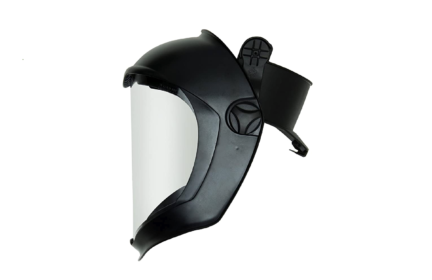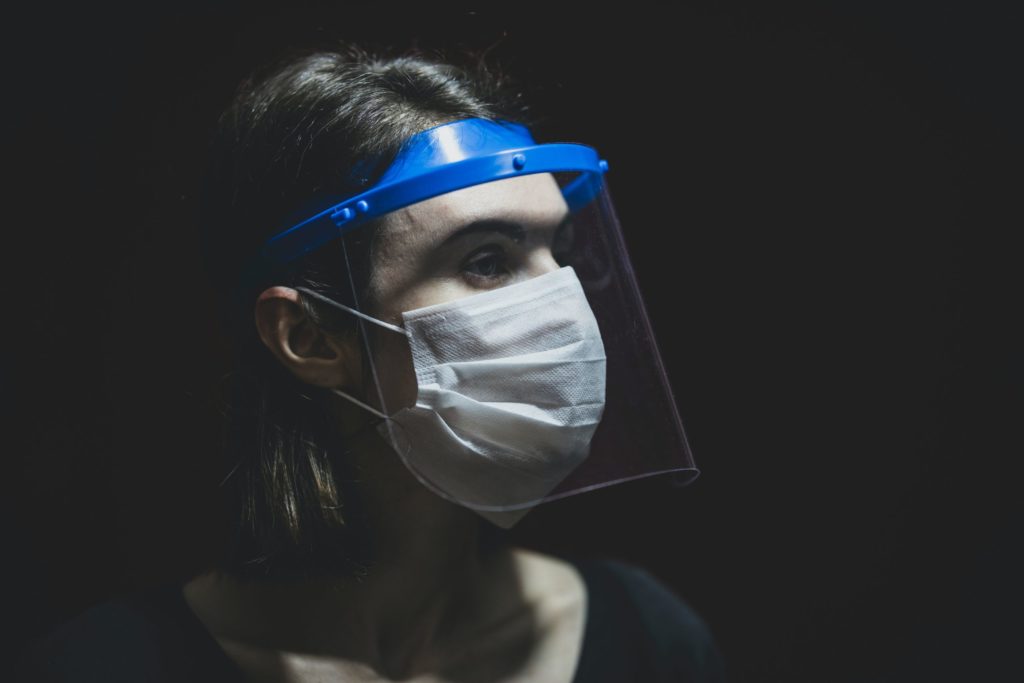Health care workers and restaurant servers seem to be wearing face shields to avoid contracting COVID-19. So should we all be wearing them, too?
The bottom line: face shields add extra protection for people who need it—but only if worn and cleaned correctly.
SARS-CoV-2, the virus that causes COVID-19, spreads most commonly through droplets that hang in the air for a short time and then fall to the ground and onto nearby surfaces. They are most concentrated within six feet of the infected person emitting them. There’s some debate about the degree to which these droplets remain airborne, so let’s begin by making it clear that mask-wearing and hand washing are of primary importance in preventing or decreasing transmission of the pandemic virus.
Is it time for a face shield?
Face shields may add an additional layer of protection and are most useful if you have to be in close contact with infected people (less than six feet). It makes the most sense for frontline healthcare workers to wear them, but you’ll also see shields being used by restaurant staff, for example. There’s probably an argument for teachers and professors to wear them as schools open up, as there will be times when educators need to step inside that 6-foot radius to help a student.
Face shields are most protective if worn over a mask, and not in place of a mask.
If you’re caring for a sick family member or frequently find yourself in situations where social distancing is compromised, a face shield could be useful to you. It may also be useful for those who have trouble keeping their hands off their face when wearing a mask. When I’m working in the hospital, I prefer face shields for eye protection. I find that goggles and safety glasses fog up with mask-wearing.
Which shields work against COVID-19?
I don’t recommend buying disposable shields and trying to reuse them. Many disposable shields have foam around the headband, and that foam can’t be thoroughly disinfected. The disposable shields I’ve come across are not made of robust enough plastic to survive heat treatment as a means of disinfection, either.
I recommend getting a durable, reusable face shield. More durable shields can be properly cleaned with disinfectant wipes or solutions. They can also be used for safety when crafting or doing other projects around the house.

Uvex Bionic Face Shield
If you have a full facepiece air-purifying respirator, like one from our guide, Best gas masks and respirators for survival, that will also work.
In the face of supply chain woes, face shields can now be hard to come by. So people are getting creative. 3D printing is becoming common, and so is the use of very simple and very common household items:
https://www.instagram.com/p/B-w9K2mn2mH/?igshid=ly898x67d8q7
I don’t see anything wrong with using homemade shields if needed. A headband can be laundered, and the binder sleeves can be tossed and replaced. It’s not stupid if it works! (But maybe don’t try to reuse those page protectors later.)
Practical tips
For general information and especially if you plan to make your own face shield, follow JAMA’s advice. Make sure the shield:
- extends below the chin,
- extends to the ears on each side,
- does not have a gap that exposes the forehead between the headband and the shield, and
- is made of smooth, solid materials (this is what allows it to be disinfected) if you plan to reuse them.
Avoid alcohol and ammonia as disinfectants on flimsier materials, as they may damage the material and make it less protective. Don’t use acetone on plastic or rubber. Use approved disinfectant wipes or cleaning solutions, and allow shields to dry before reuse. To avoid respiratory irritation, disinfect outside or in a well-ventilated area. Allow some time before reuse so traces of disinfectant can dissipate—I’ve heard complaints from shield-wearers that constant exposure to disinfectants on the mask is irritating. If you have a reactive airway, disinfecting and reusing shields without drying time may not be ideal.
Whether you have a commercial shield or a homemade one, it’s probably wise to spot-test your disinfectant to make sure it doesn’t corrode the material or warp it. Warping could make the surface porous and harder to disinfect. Corrosion could cause the clear plastic portion of your shield to become cloudy and unusable.


You are reporting the comment """ by on